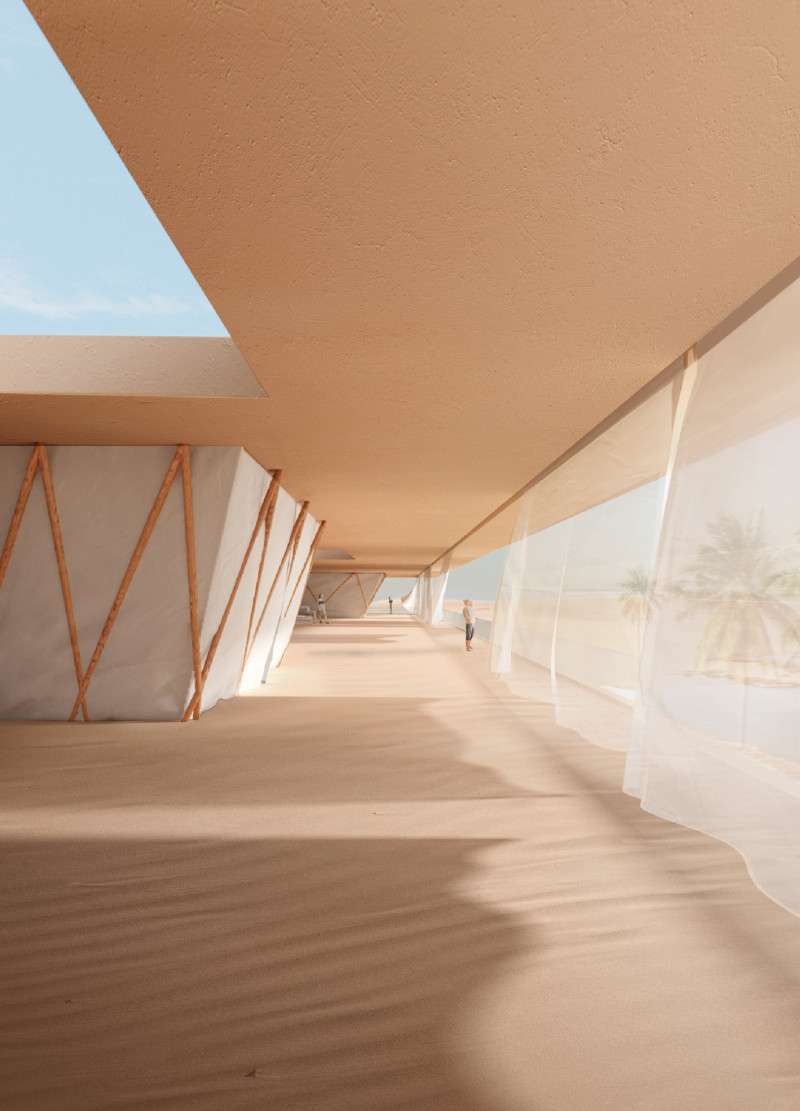5 key facts about this project
The primary function of the Oryx Caravanserai is to provide accommodation and facilities for visitors seeking an immersive experience in the desert environment. It includes multiple zones for interaction, resting, and observing wildlife, while also serving educational purposes about local ecology and culture. The strategic layout ensures optimal use of natural light and ventilation, enhancing the comfort of inhabitants while minimizing energy consumption.
Sustainable Design Practices
This project sets itself apart through its commitment to sustainability and integration with the natural landscape. The architecture employs local materials, including concrete and wood, which not only provide structural support but also resonate with traditional building techniques. The use of tent fabric allows for flexibility in space arrangement and creates an atmosphere reminiscent of historical dwellings. Additionally, the incorporation of solar panels demonstrates a proactive approach to renewable energy, ensuring that the facility operates with minimal ecological impact.
Unique Interaction Zones
The Oryx Caravanserai features designated spaces for various activities that promote engagement with the desert environment and wildlife. There are specific areas for feeding Oryx, viewing platforms for wildlife observation, and community interaction spaces. This multifaceted approach fosters a strong connection between humans and nature. The camping area also caters to diverse visitor preferences, from rustic outdoor experiences to comfortable hotel accommodations, creating a versatile environment suitable for a range of users.
To gain a more comprehensive understanding of the Oryx Caravanserai and its architectural implications, readers are encouraged to explore the project presentation. Reviewing elements such as architectural plans, sections, designs, and ideas will provide deeper insights into the innovative approaches and sustainability strategies employed in the project.


























